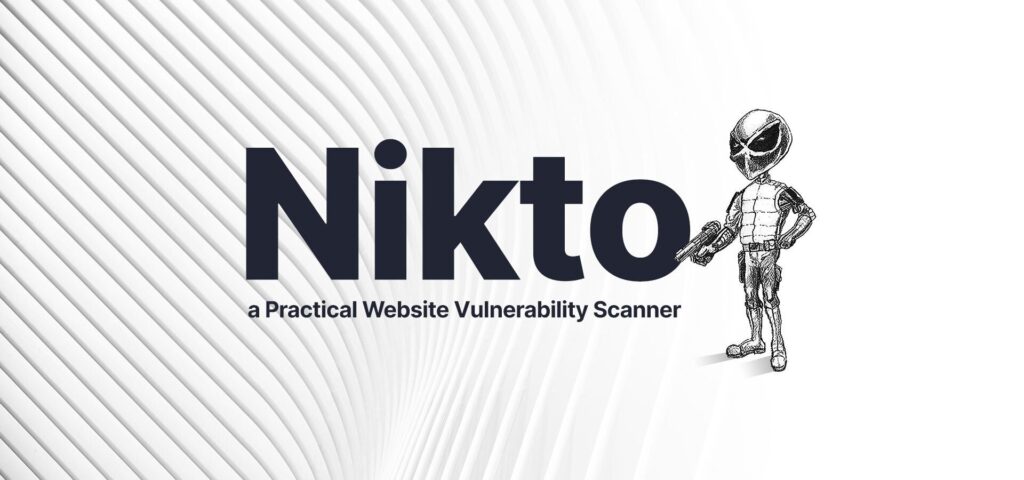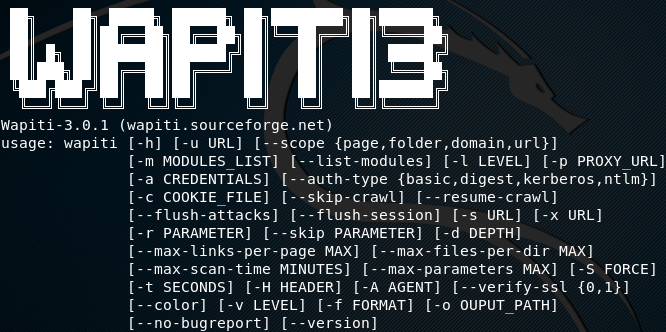{apex solutions web monitoring tools}
How to defend against web application attacks
top 5 essential tools for enhanced web attacks
Show you the best web application seurity best practices
Top 5 Must Have Tools for Superior Security
The Importance of Open Source Defensive Cyber Security tools in the Digital Age
In the ever-evolving digital landscape of today, it is absolutely crucial to have a deep understanding of web attacks and the ability to identify vulnerabilities within web applications. This knowledge plays an essential role in maintaining robust security measures that can effectively counter cyber threats. Additionally, both individuals and organizations find themselves compelled to acquire the skills necessary for defending against these increasingly sophisticated web application attacks. To illustrate, the array of potential vulnerabilities – from SQL Injection to Broken Authentication, Cross-Site Scripting, and more – underscores the need for a vigilant and proactive approach to web security
web Application Vulnerabilities
SQL Injection and Cross-Site Scripting (XSS) are among the most prevalent and dangerous vulnerabilities. Specifically, SQL Injection exploits vulnerabilities in a web application’s database layer, allowing attackers to gain unauthorized access and manipulate or destroy data. Conversely, Cross-Site Scripting targets the users of a website by injecting malicious scripts into the web pages. These scripts can hijack user sessions, deface websites, or redirect the user to malicious sites. Therefore, understanding and mitigating these vulnerabilities are paramount for the integrity and trustworthiness of web applications.
Additionally, Cross-Site Request Forgery (CSRF) and File Inclusion Vulnerabilities expose web applications to unauthorized actions and remote code execution, respectively. Similarly, Broken Access Control and Security Misconfigurations create loopholes that can be exploited to access unauthorized data or functionalities, thereby making the system susceptible to data breaches or loss of data integrity. Moreover, Sensitive Data Exposure is particularly dangerous as it involves the potential leak of confidential information, leading to privacy violations and reputational damage.
Equally important, Insecure Deserialization and Using Components with Known Vulnerabilities highlight the risks associated with unsafe data handling and reliance on outdated or vulnerable third-party components. These issues can lead to remote code execution, denial of service attacks, and other exploitative behaviors by attackers.
Furthermore, Insufficient Logging & Monitoring is a critical vulnerability as it hampers the ability to detect and respond to ongoing attacks promptly. Without proper logging and monitoring, breaches might go unnoticed for extended periods, exacerbating the damage caused by the attack.
To effectively defend against web application attacks, organizations must adopt a layered security approach, incorporating both preventive and reactive strategies. This includes regular security audits, adopting secure coding practices, timely patching of vulnerabilities, implementing effective access control measures, and continuous monitoring of web applications. Importantly, security awareness and training are equally vital, ensuring that both developers and users are aware of potential risks and best practices for safe web usage.
In conclusion, as web technologies continue to advance and integrate into every aspect of our personal and professional lives, the importance of understanding and defending against web application vulnerabilities becomes ever more critical. It is an ongoing battle against cyber threats, requiring diligence, continuous learning, and adaptation to new security challenges.
Lastly, fortunately, open-source tools provide a valuable arsenal for those seeking to enforce best practices in web application security while meeting strict requirements governing this field. Among the array of options available, several stand out due to their effectiveness and strong community support: Nikto, OpenVAS, OWASP ZAP, Skipfish, and Wapiti.
Our list of the top 5 TOOLS TO HELP FIGHT AGAINST ONLINE WEB ATTACKS
1.Nikto

Nikto is an open-source software tool that performs comprehensive tests against web servers, scanning for multiple vulnerabilities and server misconfigurations. Notably, it is particularly effective in identifying dangerous files, outdated software, and potential entry points for web attacks. As cyber threats evolve, tools like Nikto become critical in the toolbox of anyone serious about web application security, aiding in understanding and defending against web application attacks.
What It’s Used For: Specifically, Nikto is employed to scan various web servers and detect various out-of-the-box vulnerabilities that are otherwise hard to spot. It checks for thousands of potentially harmful files, outdated server components, and specific server issues. Consequently, this tool is invaluable for early detection of security threats, helping to patch up weaknesses before they can be exploited. It’s especially relevant for those seeking to strengthen their defense against common and less frequently occurring vulnerabilities alike.
Pros:
- Comprehensive Scanning: Nikto’s extensive database allows it to detect over 6,700 potentially dangerous files and applications, along with several server vulnerabilities.
- Regular Updates: The tool is regularly updated with the latest vulnerability checks, staying current with new threats.
- Versatile Reporting: Results from Nikto can be exported in various formats, making it easier for developers and security teams to analyze and take action.
- Wide Recognition: As a part of the standard toolkit in Kali Linux, it’s widely recognized and used by security professionals worldwide.
Cons:
- Noisy: Nikto scans can be quite aggressive and generate a lot of traffic, potentially alerting an attacker to defensive actions.
- Complexity for Beginners: While powerful, Nikto’s interface and command-line operation can be intimidating for new users.
- False Positives and Negatives: Like many scanning tools, it may sometimes return false positives or miss certain vulnerabilities, requiring additional manual review.
- Performance Intensive: Extensive scans can be resource-intensive and time-consuming, especially on larger websites or servers.
By integrating Nikto into their web application security strategy, organizations and individuals can take a proactive stance in identifying and addressing vulnerabilities, aligning with web application security best practices and requirements. Ultimately, this tool is a cornerstone in the realm of security diagnostics, continually aiding in the quest to understand and mitigate web attacks.
2.OpenVas - Greenbone

OpenVAS (Open Vulnerability Assessment Scanner) is a full-featured vulnerability scanner that’s been a staple in the security community for its robustness and comprehensive nature. Initially, as an open-source tool, it’s continually updated and supported by a vibrant community, thereby making it a valuable asset for anyone invested in web application security and looking to defend against web attacks
What Its Used For: OpenVAS is primarily used for scanning and identifying vulnerabilities in networks and systems. It’s a suite that covers a vast range of tests, offering over 50,000 Network Vulnerability Tests (NVTs). These tests cover a wide array of vulnerabilities, including those listed in various security bulletins and other common security flaws. Consequently, this makes OpenVAS an indispensable tool for continuous assessment of systems to identify weaknesses that could be exploited in a web attack
Pros:
- Extensive Test Base: With a comprehensive and ever-growing set of vulnerability tests, OpenVAS is capable of identifying a multitude of weaknesses across systems.
- Regular Updates: The community ensures the tool is updated regularly with the latest vulnerability tests, keeping pace with emerging threats.
- Flexible and Scalable: It can be used for various sizes of networks and adapted to many different environments.
- Detailed Reporting: OpenVAS provides detailed and actionable reports that help in understanding the vulnerabilities and taking corrective measures.
Cons:
- Complexity: The breadth of features and the detail of scans can be overwhelming, especially for beginners or smaller teams without dedicated security professionals.
- Resource Intensive: Thorough scans, especially on larger networks or systems, can be time-consuming and resource-intensive.
- Setup and Maintenance: Setting up and maintaining OpenVAS can be complex and requires regular attention to keep it up-to-date and functioning optimally.
- Limited User Interface: While functional, the user interface can be less intuitive compared to commercial products, potentially steepening the learning curve.
By utilizing OpenVAS, organizations and individuals can significantly enhance their ability to detect and address web application vulnerabilities. Its comprehensive scanning capabilities are integral to maintaining robust security measures and defending against the myriad of web attacks. With its commitment to open-source principles and community support, OpenVAS remains a reliable choice for anyone serious about web application security.
For a full walk through on how to install Greenbone and OpenVas on Kali Linux Purple or using a vmware OAV download please check our guide below. The first section is on kali Linux Purple and the second section is using a VMware OAV image. Both very simple to isntall.
HOW TO INSTALL OPENVAS AND GREENBONE on kali linux purple
Step One. Run an update on your system to make sure we have all the correct patches.
sudo apt update
Step Two. Now run the upgrade
sudo apt upgrade
Step Three. Now we can run the openvas / greenbone setup. This command will install all the necessary services , databases as well as the permissions needed to run the software. During this step, openvas will start downloading the feed which will take 20mins to and hour or morning depending on your connection speed. I find that pushing enter during the download makes it go a little faster. After setup is done, greenbone will show you the default admin username and password. You’ll need to copy this down onto a notepad to use it for later. It looks like picture below.

sudo gvm-setup
Step Four. Once the install is completed, now we can run the check system command. This will check to system to make sure we have all the correct dependences and services installed. During this process, all servcies will get started as well.
sudo gvm-check-setup
Step Five. Once the check is done. You will be able to browse to your dashboard using the default url which will be https://127.0.0.1:9392
You’ll get promoted to enter the default admin username and password.
Below is a complete video walk through from our youtube channel.
HOW TO INSTALL OPENVAS AND GREENBONE USING VMWARE OAV IMAGE FOR FREE
You can download the free verison of vmware workstation here https://www.vmware.com/products/workstation-player.html
You can also download the community verison of OpenVas or Greenbone here: scrolling down to vmware workstation player. Then Download.
3.OWASP ZAP (Zed Attack Proxy)

The OWASP Zed Attack Proxy (ZAP) is one of the world’s most popular free cyber security tools and is actively maintained by hundreds of international volunteers. It’s a part of the Open Web Application Security Project (OWASP), aimed at helping developers and security experts identify and fix vulnerabilities in their web applications. As an open-source tool, ZAP is a comprehensive solution to understand web attacks and defend against them effectively.
What It’s Used For: OWASP ZAP is primarily used for finding vulnerabilities in web applications during development and testing phases. It is designed to be used by both those new to application security as well as professional penetration testers. It’s particularly known for its automated scanners as well as a set of tools that allow manual security testing. By simulating attacks on your web applications, ZAP helps identify security vulnerabilities, making it a vital tool for preemptive defenses against web attacks.
Pros:
- Comprehensive Scanning: Offers a variety of scanners and tools for automated and manual vulnerability detection.
- Community-Driven: As an OWASP project, it benefits from a large community of contributors and users who continuously improve and document the tool.
- Easy to Use: Designed for beginners and experts alike, with a user-friendly interface and extensive documentation.
- Active Development: Regularly updated with new features and security tests to keep pace with the evolving landscape of web application security.
Cons:
- Performance Impact: Can be resource-intensive, especially when performing complex or multiple simultaneous scans.
- Learning Curve: While designed to be accessible, the breadth of features can be overwhelming, and users might require time to become proficient.
- False Positives: Like many automated tools, there can be false positives that require manual verification.
- Primarily for Web Applications: Its focus is primarily on web application vulnerabilities and might not cover broader network or system-level security assessments.
By integrating OWASP ZAP into the web development and testing process, organizations can significantly enhance their ability to detect and mitigate vulnerabilities. It aligns well with web application security best practices and plays a critical role in the ongoing effort to understand and defend against web application attacks. As a dynamic tool in the field of cybersecurity, ZAP continues to evolve and adapt, offering an ever-improving solution for web application security.
Conclusion
Snort stands as a sentinel in the realm of network security, offering robust and real-time monitoring of network traffic. Its customizable nature and the strong support of a broad user community make it a valuable tool for defending against a myriad of cyber threats. While it demands attention to configuration and tuning, the level of security and insight it provides makes it a top choice among the tools of cyber security, especially for organizations seeking a powerful, open-source solution for network intrusion detection and prevention.
For a fast How to walk through of installing OWASP ZAP check our take a look at our youtube tutorial.
HOW TO INSTALL OWASP ZAP: STEP BY STEP GUIDE IN 2024
4. Skipfish

Skipfish serves as an active reconnaissance and security tool for web applications. Primarily, it is designed to perform comprehensive security scans of web content in an efficient manner. Being an open-source tool, Skipfish is renowned for its high speed and low false positive rates. Consequently, this makes it a valuable addition to any security assessment or penetration testing toolkit, particularly for those focused on defending against web attacks.
What It’s Used For: Skipfish serves as an automated reconnaissance tool that prepares an interactive sitemap of a targeted site by carrying out recursive crawls and dictionary-based probes. The tool is particularly adept at identifying various issues, including server-side script vulnerabilities, insecure user inputs, and other common web application vulnerabilities. By efficiently spidering and analyzing web applications, Skipfish helps identify potential security threats that could lead to serious web attacks.
Pros:
- High-Speed Scanning: Skipfish is designed for high performance, allowing for rapid scanning of large web applications.
- Heuristic Detection Techniques: Employs advanced techniques for the identification of security issues, reducing false positives.
- Interactive Site Maps: Generates detailed sitemaps with annotated output from security checks, providing a clear overview of the application structure and vulnerabilities.
- Ease of Use: Offers a straightforward setup process and generates user-friendly reports, making the findings accessible even to those with limited security expertise.
Cons:
- Resource Intensity: While fast, it can be resource-intensive, especially when scanning larger sites or applications.
- Potential for Noise: Aggressive scanning can generate a considerable amount of traffic, potentially alerting defensive measures or causing performance issues for the application being scanned.
- Maintenance and Updates: Being an open-source project, it relies on community support for updates and might not be as frequently updated as commercial tools.
- Focused Scope: Primarily focuses on specific types of vulnerabilities, and might not be as comprehensive as some other tools for certain types of web application security assessments.
Skipfish is particularly useful for organizations and security professionals looking for a fast and reliable tool to add to their web application security arsenal. Its ability to quickly identify vulnerabilities and provide detailed insights makes it a valuable tool for those dedicated to understanding and mitigating web application vulnerabilities and attacks.
How To Install A Run Your First Web Scan With Skip Fish
5. Wapiti

Wapiti is a powerful open-source tool used for testing the security of web applications. It operates by “black-box” scanning, where it does not view the source code but instead audits the web pages of the deployed web application, looking for scripts and forms where it can inject data. This approach allows Wapiti to discover various types of vulnerabilities, acting as a crucial component in the defense against web application attacks.
What It’s Used For: Wapiti is used to test web applications for security vulnerabilities by performing injections. It supports checking for a range of vulnerabilities, including SQL Injection, Cross-Site Scripting (XSS), and XXE (XML External Entity) injection, among others. By simulating these attacks, Wapiti helps identify and report web application vulnerabilities, allowing developers and security professionals to address and patch these weaknesses.
Pros:
- Variety of Attacks: Capable of testing numerous types of attacks, providing a comprehensive vulnerability assessment.
- Flexibility: Allows for both automated and customized scanning, accommodating different levels of detail and complexity.
- Report Generation: Generates detailed reports, making it easier for users to understand vulnerabilities and take appropriate action.
- Community Support: Benefits from the support and contributions of the security community, ensuring it stays relevant and effective.
Cons:
- False Positives and Negatives: May produce false positives or negatives, necessitating manual verification for accuracy.
- Complexity for Beginners: The tool’s wide range of capabilities and command-line interface might be challenging for beginners to grasp.
- Performance Intensity: Depending on the scope of the scan and the size of the application, it can be quite resource-intensive.
- Limited User Interface: Primarily operated through the command line, which might be less accessible for those accustomed to graphical interfaces.
Wapiti is a powerful open-source tool used for testing the security of web applications. Initially, it operates by ‘black-box’ scanning, where it does not view the source code but instead audits the web pages of the deployed web application, looking for scripts and forms where it can inject data. Consequently, this approach allows Wapiti to discover various types of vulnerabilities, acting as a crucial component in the defense against web application attacks.
Furthermore, Wapiti is used to test web applications for security vulnerabilities by performing injections. Specifically, it supports checking for a range of vulnerabilities, including SQL Injection, Cross-Site Scripting (XSS), and XXE (XML External Entity) injection, among others. By simulating these attacks, Wapiti helps identify and report web application vulnerabilities, thereby allowing developers and security professionals to address and patch these weaknesses effectively



